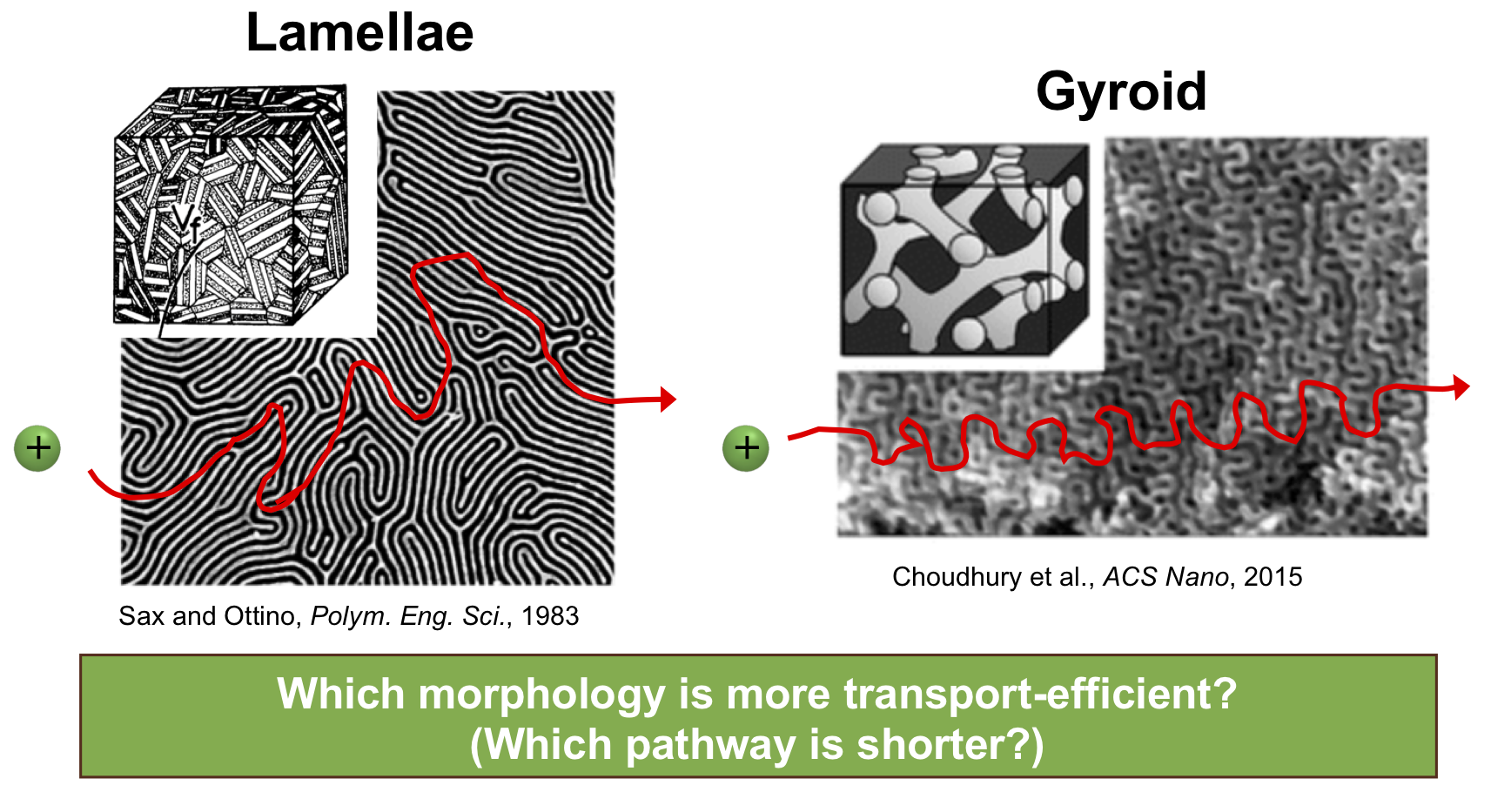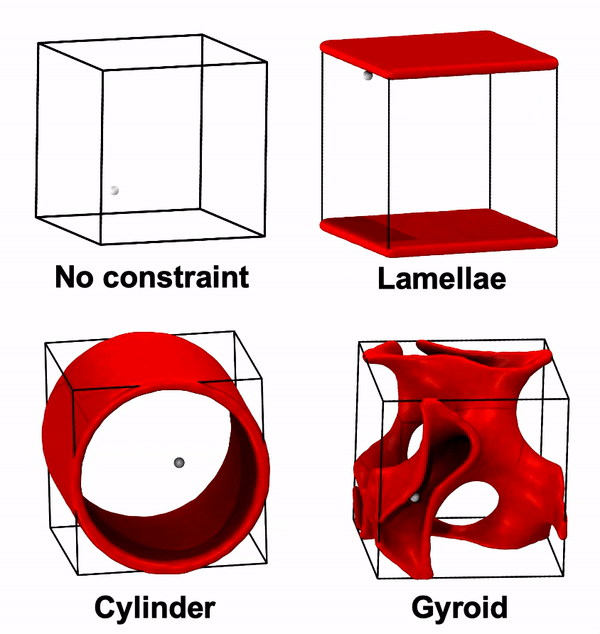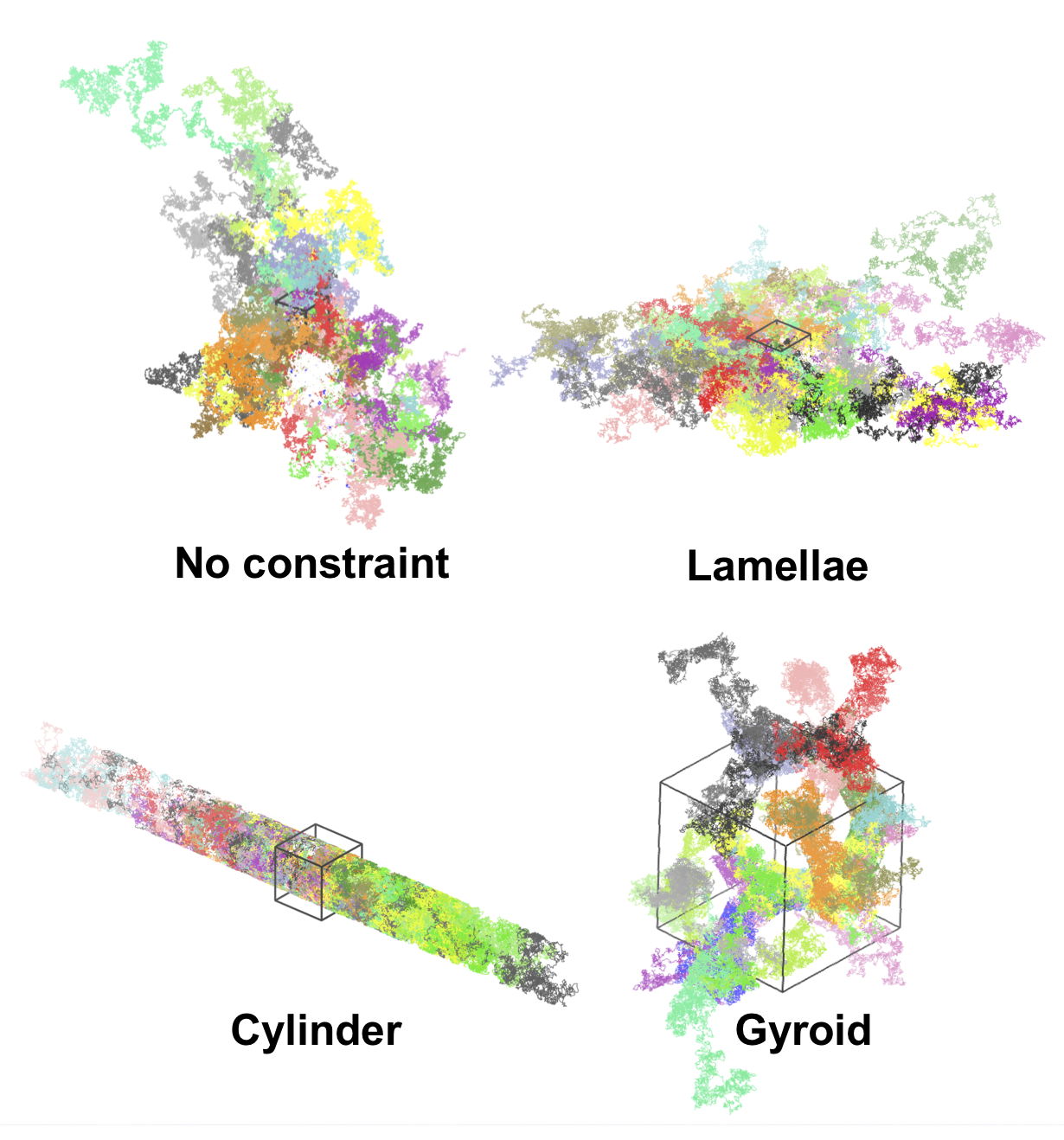Python script to generate unconfined or confined random walks (RW) in the presence of walls. The fundamental assumption is that when the RW would pass through a wall, it instead reflects off.
Block copolymers (BCPs) are widely used in transport applications, as their chemically distinct polymer components locally microphase separate into domains with different material properties. For battery electrolyte applications, ions dissolve in and diffuse through one microphase while the other provides mechanical robustness, potentially allowing for both ion conduction and the ability to block lithium dendrite growth at the same time. The BCP systems of interest are locally ordered with well-known microphases such as hexagonally packed cylinders, lamellae, and gyroid phases. However, on a longer length scale such as the width of a typical membrane, multiple grains with these structures are present, and these grains are often considered to be randomly oriented with respect to each other. Thus, it is difficult to predict which morphology is most transport-efficient, as shown in the figure below.
Over long enough time scales, a diffusing particle’s motion follows a random walk. Thus, we develope this python script to perform random walk confined by various BCP nanostructures and to predict particle diffusion in those structures. Specifically, this script considers particles placed in the BCP conducting domain that move as random walks constrained by the surfaces of the domain (if any random walk step would to cross the surface, it instead is reflected). For now, it is also assumed that the box is a unit cube with appropriate periodic boundary conditions (or equivalently, we only start in the unit cube, but the system expands into all space with the appropriate symmetry). Here's a demo of this script:
$ python crw.py [-h] [-n NTRIAL] [-p NPARTICLE] [-s NSTEP] [-l LBOX] [-c CONSTRAINT] [-i DUMPINTRVL] [-f FA] [-o]
Scipy and numpy packages are required
The input flags/arguments of crw are summarized in the following table:
| Flag | Argument | Type | Explanation | Default |
|---|---|---|---|---|
-n |
ntrial |
int |
Number of trials | 100 |
-p |
nparticle |
int |
Number of particles in each trial (no collision) | 10 |
-s |
nstep |
int |
Number of steps for each paricle in each trial | 100000 |
-l |
lbox |
int |
Box dimension (cubic box) | 20 |
-c |
constraint |
str |
Constraint type (none, lamellae, cylinder, or gyroid) |
none |
-i |
dumpintrvl |
int |
Frequency of the MSD result output | 10000 |
-f |
fA |
float |
Volume fraction of conducting (A) domain (only matters for gyroid phase) | 0.35 |
-o |
Output trajectory file (lammpstrj format for VMD) | False |
Note that for constraint,
none: no constraint (no wall)lamellae: assumes that the z=0 and z=L planes are wallscylinder: assumes that the wall is a cylinder surface along z-dir with radius of L/2 centered at (L/2, L/2)gyroid: assumes that the wall is the surface of a double gyroid unit cell
The script returns (prints out) the average and the standard deviation from each trial's mean square displacement of the random walk particle(s). Using the default input arguments, a representative output result is as follows:
step msd-avg msd-std
0 0.0000 0.0000
10000 9700.4309 2388.6423
20000 19580.0409 4009.1777
30000 29664.9249 6137.1582
40000 40341.2519 9551.9256
50000 50183.5446 11981.6318
60000 59875.0177 13894.7659
70000 70194.5502 18346.1631
80000 79615.8532 20184.9666
90000 90235.7670 21381.2300
100000 99438.5117 24490.8179
Finally, if the flag -o is used, the trajectory of every random walk will be created in the format of a LAMMPS trajectory file. This allows you to visualize the trajectory in VMD. Example images are shown below (different colors represent different trial/particle trajectories):
Reference in BibTeX [link]
@article{shen2018diffusion,
title={Diffusion in lamellae, cylinders, and double gyroid block copolymer nanostructures},
author={Shen, Kuan-Hsuan and Brown, Jonathan R and Hall, Lisa M},
journal={ACS Macro Letters},
volume={7},
number={9},
pages={1092--1098},
year={2018},
publisher={ACS Publications}
}


